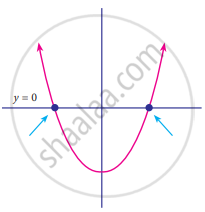Advertisements
Advertisements
प्रश्न
Verify whether the following zeroes of the polynomial, indicated against them.
p(x) = (x + 1) (x – 2), x = – 1, 2
उत्तर
If x = −1 and x = 2 are zeroes of polynomial p(x) = (x + 1) (x − 2), then p(−1) and p(2) should be 0.
Here, p(−1) = (−1 + 1) (−1 − 2)
= 0 (−3)
= 0
Also, p(2) = (2 + 1) (2 − 2)
= 3 (0)
= 0
Therefore, x = −1 and x = 2 are zeroes of the given polynomial.
APPEARS IN
संबंधित प्रश्न
Find the zero of the polynomial in the following case:
p(x) = x + 5
Find the value of the polynomial 5x – 4x2 + 3 at x = 2.
Find the zero of the polynomial of the following:
p(x) = ax when a ≠ 0
Verify whether the following are zeros of the polynomial, indicated against them, or not
p(x) = x3 – 1, x = 1
Verify whether the following are zeros of the polynomial, indicated against them, or not
p(x) = ax + b, x = `(-"b")/"a"`
Find the number of zeros of the following polynomial represented by their graph

Find the number of zeros of the following polynomial represented by their graph

`(-4)/5` is a zero of 4 – 5y
–3 is a zero of y2 + y – 6
Find the zeroes of the polynomial in the following:
g(x) = 3 – 6x
